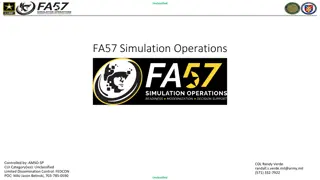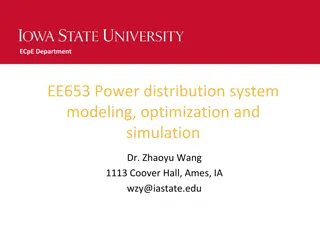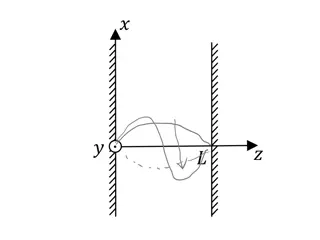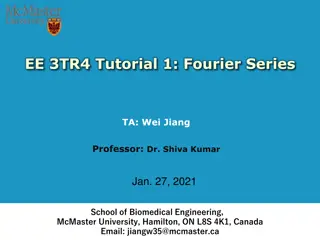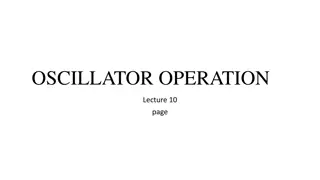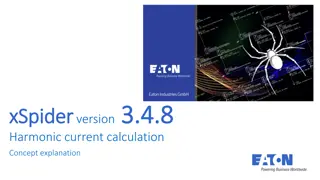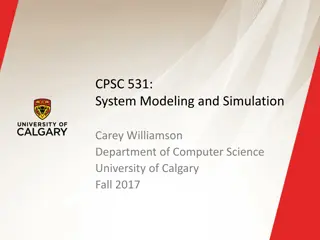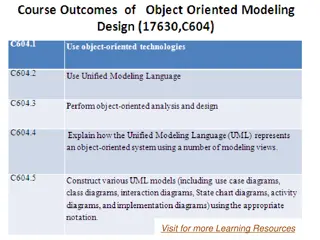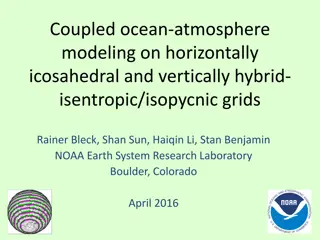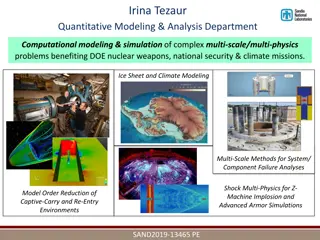Modeling Harmonic Oscillations and its Applications
Dive into the world of harmonic oscillations with a focus on the crucial damping coefficient. Explore simple undamped and damped harmonic motion, along with the analysis of mass-spring systems and bifurcations, all illustrated with informative visuals.
Download Presentation

Please find below an Image/Link to download the presentation.
The content on the website is provided AS IS for your information and personal use only. It may not be sold, licensed, or shared on other websites without obtaining consent from the author.If you encounter any issues during the download, it is possible that the publisher has removed the file from their server.
You are allowed to download the files provided on this website for personal or commercial use, subject to the condition that they are used lawfully. All files are the property of their respective owners.
The content on the website is provided AS IS for your information and personal use only. It may not be sold, licensed, or shared on other websites without obtaining consent from the author.
E N D
Presentation Transcript
Modeling Harmonic Oscillations and its Applications By Dallas Gosselin and Jonathan Fernandez
Introduction Real World Harmonic Oscillators Harmonic Oscillator equation: Thesis: The damping coefficient in the harmonic oscillator equation is the most important parameter an engineer must account for, as this coefficient has the largest impact on determining the dynamics of the system being modeled.
Simple Undamped harmonic motion Damping coefficient equals zero, so the system is given by Phase portrait is a cycle about the origin with counterclockwise rotation Solutions are sinusoidal with constant amplitude Amplitude depends only on initial conditions, not the parameters Period of the system is dependent upon the parameters, and is given by
Damped harmonic motion Nonzero damping coefficient, so the system is given by Phase portrait is a spiral sink about the origin, rotating counterclockwise Solutions are sinusoidal with exponentially decaying amplitude. The oscillator returns to its at rest position (stable equilibrium) over time Amplitude depends only on initial conditions, not the parameters Period of the system is dependent upon the parameters, and is given by
Analyzing mass spring systems and bifurcations with and w/o an additional non-compressive force (Rubber Band) Undamped harmonic oscillator Damped harmonic oscillator Undamped harmonic oscillator w/ rubber band Damped harmonic oscillator w/ rubber band http://capone.mtsu.edu/wroberts/shm. htm
Undamped Harmonic Oscillator With and Without the Rubber Band With the Rubber Band (Case 3) Without the Rubber Band (Case 1) The system is: The system is: Parameter values for the spring constant k1=12.5 and 4.5<k2<5 Parameter values for the spring constant 12<k1<13 Phase plot analysis Phase plot analysis
Damped harmonic oscillator With and Without the Rubber Band Without the Rubber Band (Case 2) With the Rubber Band (Case 4) The system is: The system is: Parameter values for the spring constant k1=12.5, damping coefficient 1< b<10 Parameter values for the spring constant 12<k1<13 Phase plot analysis Phase plot analysis
Bifurcations B=5 Without the Rubber Band With the Rubber Band B=6 (Case 4) (Case 2) B=7
Active Shock Absorbers Motion Master Ride Management System Shock absorbers with Magnetorheological (MR) fluid create an adjustable damping coefficient Goal of these systems is achieve perfect balance of safety and comfort Damping factor is a function of velocity. We examined three different functions for b(v) http://www.lord.com/products-and-solutions/magneto-rheological-(mr)/seat-suspension.xml
With b(v)=v4, we get the system Taking the Jacobian: Which at the origin yields with eigenvalues = i, so this system can be classified as an unstable center by linearization y(t) graph revealed that solutions were actually approaching the origin, but only after large increments of time Realistically, this system will experience minor oscillations from both small and large road bumps
With b(v)=1-e-10v^2 , we get the system Spiral sink solutions, damping effect is very efficient For small initial velocities, initial amplitudes are small, so the seat will have its intended effect However, at large initial velocities, there is a sharp jump in the y-position, which means the seat will bottom out -a potential safety hazard
With b(v)=arctan(v), we get the system System follows a periodic cycle, and the amplitudes of the y(t) and v(t) graphs are enormous As we increased time to larger and larger values, no damping actually occurred The seat would clearly bottom out for any size pothole or bump in the road, and it will never return to stable equilibrium Therefore, this system should never be used to model an active shock absorber
Active Suspension http://www.youtube.com/watch?v=q8sVDenpPOE
Conclusion Parameters and the dynamics of the oscillator Direct proportionality of the restoring force and displacement, and the damping coefficient and velocity of an object. Damping Coefficient and sinusoidal motion Engineering Applications today!
Work Citied Blanchard, Paul, Robert L. Devaney, and Glen R. Hall. Differential Equations. 4th ed.Pacific Grove, CA: Brooks/Cole Pub., 2012. Print. Giancoli, Douglas C. Physics for Scientists & Engineers with Modern Physics. 4th ed.Upper Saddle River, NJ: Prentice Hall, 2009. Print.



